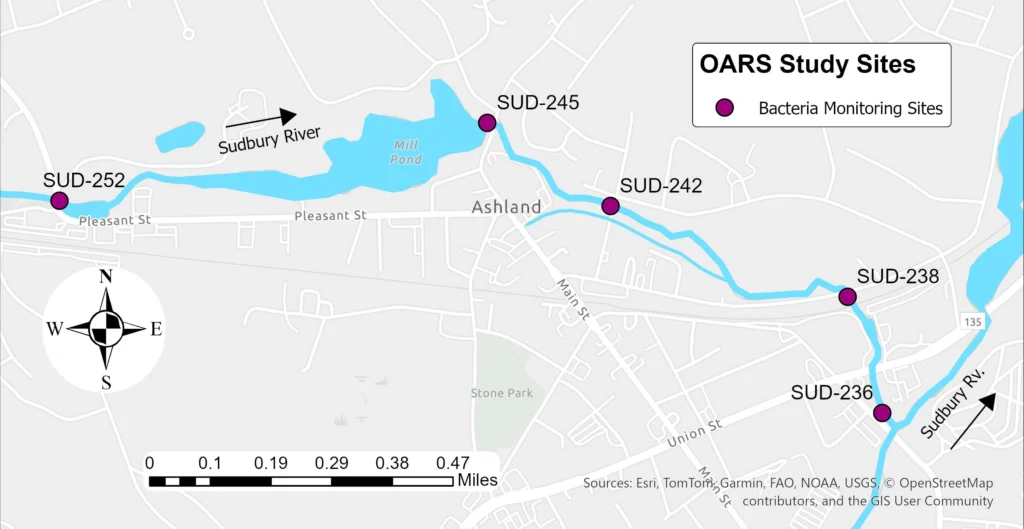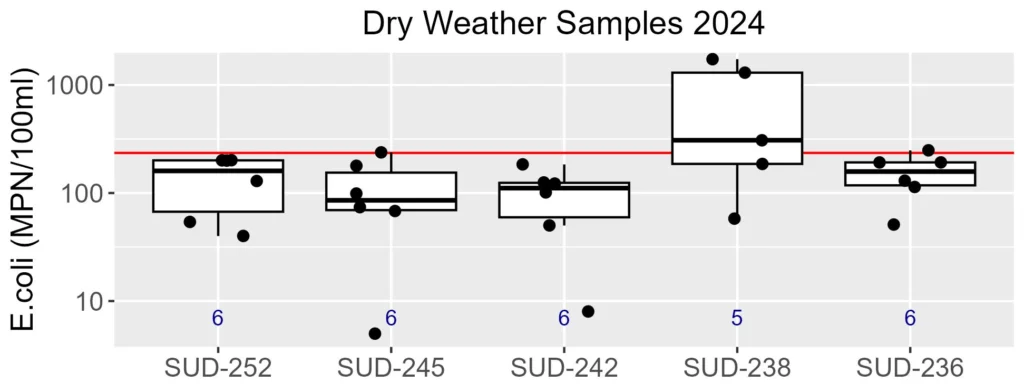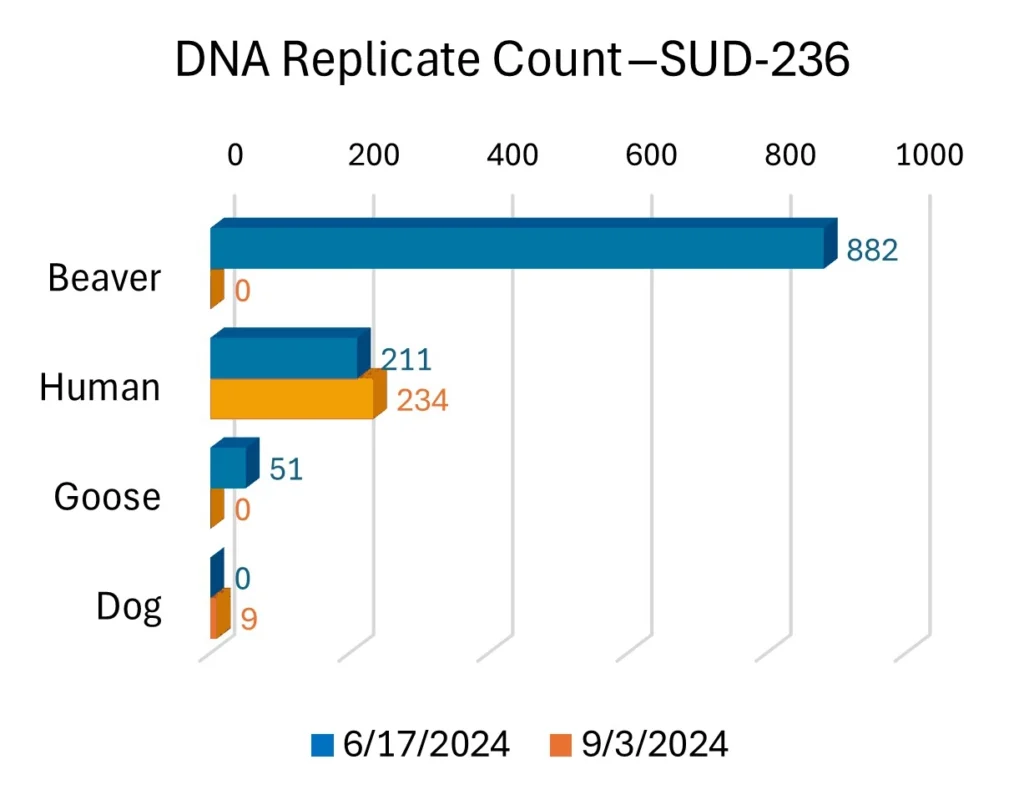Sudbury Ashland Bacteria Study
February 18, 2025
OARS River Log | By Ben Wetherill, OARS’ Water Quality Scientist | Published February 18, 2025
During the summer of 2024, with the help of volunteers, OARS conducted a special study of bacterial water quality in the Ashland section of the Sudbury River. This study was prompted by frequent elevated E. coli bacteria levels in our 2019–2023 sampling in the Sudbury River at the Chestnut Street river access point in Ashland. A grant from the Greater Lowell Community Foundation funded the study. We conducted three different source tracking tests: bacteria monitoring, DNA analysis, and detergent testing. We found one major source of pollution and several other potential sources. We are now sharing this information with the Town of Ashland so they can follow up on it. A map of our sampling sites is shown here.

Bacteria Results
During the six years between 2019 and 2024, 35% of bacteria samples at the Ashland Chestnut Street access point (out of 71 total samples) exceeded the EPA’s Beach Action Value (BAV) swimming threshold of 235 CFU-MPN per 100 ml. Three samples also exceeded the MassDEP boating threshold of 1260 CFU-MPN per 100 ml. In the summer of 2024, OARS volunteers collected samples at four additional locations upstream of the Chestnut Street site (SUD-236) in an attempt to pinpoint the source of the bacterial pollution. Our results showed that in dry weather, the Front Street bridge sampling site (SUD-238) produced significantly higher bacteria counts than any of the upstream sites. This pointed to a chronic dry-weather pollution source between Concord Street (SUD-242) and Front Street (SUD-238).

DNA Results
DNA analysis can pinpoint which animal species are responsible for contamination. OARS had two Sudbury River water samples from the Chestnut Street site (SUD-236) analyzed for DNA. The results of the two samples were quite different. The first sample was collected during wet weather in moderately high flows and showed a large proportion of beaver DNA. The second sample was collected during a long period of dry weather and was almost 100% human DNA. The dry-weather results, in particular, support the suspicion of potential human sewage pollution upstream of the dry-weather bacteria hot spot (SUD-238).

Detergent Results
Detergent in stormwater indicates a cross-connection with sewer pipes. With the help of one of our intrepid volunteers, OARS conducted a survey of all the outfall pipes draining into this section of the Sudbury River. We canoed and walked down the river and tested for detergents in each pipe with flowing water. This detergent survey clearly identified two pipes that need to be addressed. A pipe behind the parking lot of 50 Main Street (AS-03) had the highest detergent level out of all of our measurements. And, a municipal stormwater outfall located between 50 Main Street and 98 Main Street also had very high detergent levels. This outfall feeds a side stream (AS-04, AS-06), which enters the Sudbury River upstream of the Front Street bridge (SUD-238) and is connected to a large network of street sewers for the whole downtown area of Ashland. The location and size of this outfall support the suspicion of sewage pollution upstream of the dry-weather bacteria hot-spot (SUD-238).

Study Conclusion
The combination of the bacteria, DNA, and detergent results points to the municipal storm sewer outfall between 50 Main Street and 98 Main Street as the primary source of pollution in this section of the river. The outfall feeds the stream that measured high detergent levels and which joins the Sudbury River just upstream of the bacteria monitoring hot spot at the Front Street bridge. The dominance of human DNA in the dry-weather DNA analysis confirms that there must be a sanitary sewer connection polluting this outfall. It will require more work on the part of the Public Works Department to track down the actual pollution source within the street sewer network, but OARS is eager to work with the town of Ashland to resolve these issues and continue monitoring the recreational safety of the river.

This work was made possible through funding from the Greater Lowell Community Foundation.

